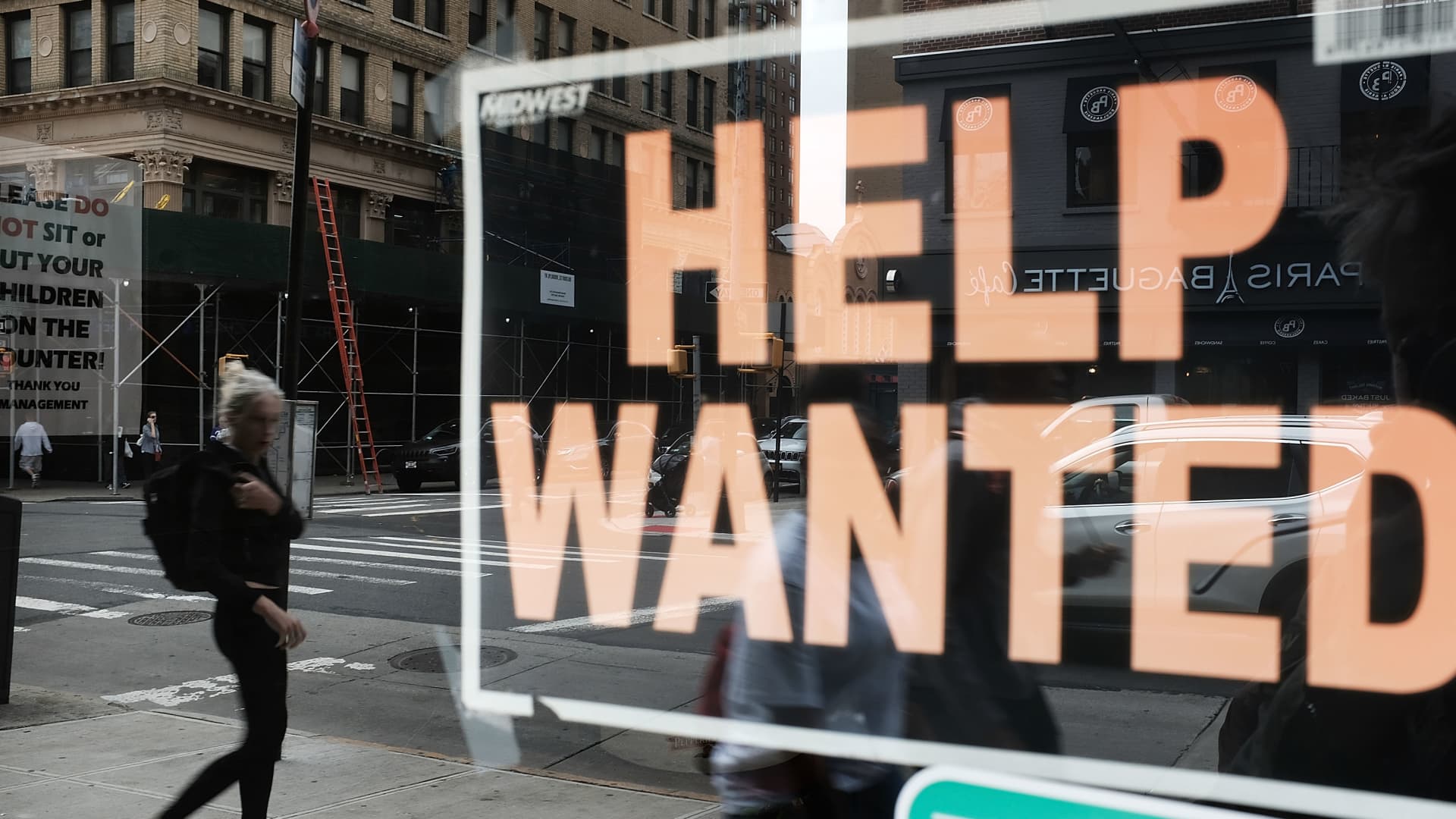
The U.S. labor market tightened further last week, with jobless claims coming in at the lowest level since the beginning of the year, the Labor Department said Thursday.
Initial filings for unemployment insurance totaled 214,000 for the week ended March 12, better than the Dow Jones estimate for 220,000 and a decline of 15,000 from the prior week.
The total was the lowest since Jan. 1 and marked another sign that the market and its 3.8% jobless rate was nearing full employment.
The four-week moving average, which accounts for weekly volatility in the numbers, also declined, falling 8,750 to 223,000.
Continuing claims, which run a week behind the headline numbers, fell by 71,000 to 1.42 million, the lowest level since Feb. 21, 1970.
In other economic news, housing starts totaled 1.77 million, more than the 1.7 million estimate. Building permits totaled 1.86 million, a bit above the 1.85 million estimate.
Also, the Philadelphia Federal Reserve’s gauge of manufacturing activity in the region jumped to 27.4 in March, much better than the 15 estimate. The number represents the difference between firms seeing expansion against contraction.
For the employment picture, the jobs situation remains complicated.
Despite a strong hiring pace over the past several months, there are nearly 5 million more jobs than there are available workers. That has coincided with a sharp increase in wages and has helped push inflation levels to their highest point since the early 1980s.
Federal Reserve Chairman Jerome Powell on Wednesday described the labor situation as “tight to an unhealthy level” as the central bank enacted its first interest rate increase in more than three years. Fed officials indicated they see the equivalent of another six hikes through 2012 then three more next year to control prices.
The Philadelphia Fed’s manufacturing reading reflected the intense inflation pressures that companies are facing.
The prices paid component of the index hit 81 in March, the highest reading going back to June 1979 as 87.2% of respondents reported increases in input prices, against just 6.2% that saw declines. The prices received index rose about 7 points to 56.6. The employment index increased nearly 7 points to 38.9.
On the housing side, builders have struggled to keep up with high demand against supplies of materials and labor due to the jobs gap.
The February numbers represented a 6.8% gain from a month ago and a 22.3% jump for starts compared to the same period in 2021. For permits, the monthly number was down 1.9% from January but up 7.7% from a year ago.




